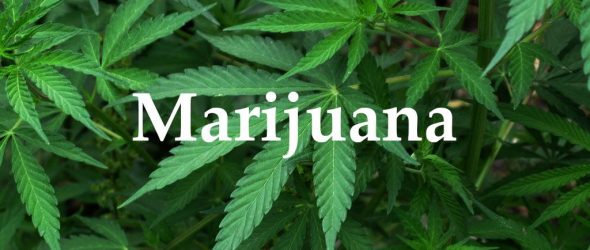CHICAGO – In a few short years, cannabis sales have transformed from a mostly illegal enterprise to an ‘essential business’ that many states have kept open during the COVID-19 epidemic, the worst the nation has seen this past century. Experts at Anderson Economic Group have been closely monitoring COVID-19’s impacts on the cannabis industry.
Charting new territory. Brian Peterson, director of public policy for Anderson Economic Group, notes that this is the first time the cannabis industry has faced a significant economic downturn since states began legalizing. “We have been tracking demand for cannabis through the AndCan® Index since 2015. This is the first time the market has seen a recession,” Peterson said. “There’s a lot of uncertainty about what will happen next – we can’t look to the past to predict how consumption patterns will change in response to an economic downturn because this is the first one.”
Initial data suggests demand in March was strong. Andrew Miller, a senior analyst at Anderson Economic Group, predicts that medical cannabis sales will see a short-term boost as patients concerned about dispensary closures engage in panic-buying. “Illinois and Maryland both saw their medical cannabis sales increase by over 20% in March,” he noted. And in Massachusetts, where a stay at home order banned recreational cannabis sales, medical patient registrations have more than tripled as consumers seek to switch to medical cannabis. [1] Initial data suggests that recreational cannabis sales held steady in March as well. Illinois and Michigan both saw recreational sales increase despite stay at home orders.
Although initial data show increased demand, Miller notes that we won’t have a clearer picture of the epidemic’s impact until states begin reporting sales data for April. “Unlike March,” Miller said, “sales data for April will reflect a full month of stay at home orders and provide a better look at their impact on cannabis sales.”
Cannabis markets face headwinds in the long term. Looking to the intermediate and long term, there are many factors working against cannabis markets. Anderson Economic Group previously estimated that that 104 million Americans would lose at least two days’ worth of income in April – a development that will undoubtedly lead some cannabis consumers to tighten their belts. Furthermore, global supply chain disruptions, combined with the cannabis industry not being eligible for federal relief, may slow or stop cultivation.
[1] Adams, Dan, (2020). “Massachusetts medical marijuana registrations spike 245 percent,” Boston Globe, April 23, 2020, https://www.bostonglobe.com/.
Peterson expects the extent of the epidemic’s impacts to vary from state to state. He noted that some states allow cannabis delivery and telehealth appointments for medical patient registration. “Ease of access will influence demand,” Peterson said. “Consumers concerned about virus exposure may not want to risk a trip to the dispensary or doctor’s office,” he noted. Earlier this year, AEG CEO Patrick L. Anderson wrote about the impacts of state policy on cannabis consumption in his award-winning paper, “Blue smoke and seers.”[1]
Another concern for the cannabis market is the impact of a downturn in tourism-reliant markets. In Illinois, for example, out-of-state consumers regularly account for one-quarter of recreational sales. If stay at home orders remain in place and consumers choose not to travel, states like Illinois, Colorado, and Nevada could lose out on a large portion of sales.
This analysis was prepared by Anderson Economic Group economists Brian Peterson and Andrew Miller in Chicago, Illinois.
For more, see Anderson Economic Group’s AndCan Index and COVID-19 press releases.
[1] Anderson, Patrick L., (2020). “Blue Smoke and seers: measuring latent demand for cannabis products in a partially criminalized market,” Business Economics 55, 26–40.


